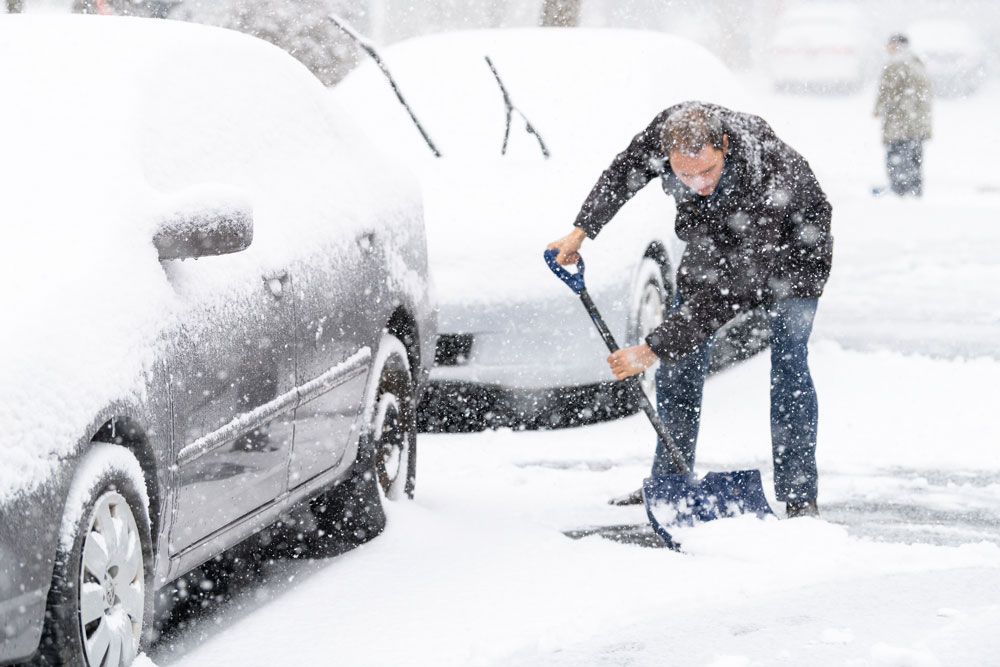How To Prepare For Snowmelt Flooding
 CONTENTS
CONTENTS
- How does snowmelt cause flooding?
- The different ways to prevent snowmelt flooding your home
- What to do if snowmelt floods your home
- Contact us today
Ice and snowfall always bring disruption, from burst pipes to traffic chaos. But when the cold snap is followed by milder temperatures and it thaws quickly, it could cause flooding. According to the North Dakota State University, one cubic foot of snow can hold three gallons of water.
Here at ICE Cleaning, our flood restoration services can quickly make your home dry and clean. Our technicians can remove all the water, decontaminate the affected area, and provide additional services like mould remediation.
Read on to find out what you must do before the snow and ice melts.
How does snowmelt cause flooding?
Snowmelt is surface runoff that is produced by melting snow. It is an important part of the seasonal water cycle. But during quick thaws, the ground will still be frozen so the water can’t seep into the ground. There are a few other conditions that can cause melting snow to flood properties:
- If the ground was saturated prior to the snowfall, it will not be able to absorb extra water from the snowmelt.
- Heavy rain during a thaw increases the chances of flooding, especially if the ground is still frozen.
- In rivers and lakes “ice jams” can form - where chunks of ice flow up against bridges and form dams, causing water to back up behind them. People that live near rivers and lakes need to be especially wary of this.
Extreme snowfall followed by a warm spell can have very destructive effects on the environment and local community.
The different ways to prevent snowmelt flooding your home
There are lots of things you can do to protect your home from a potential flood. Here are some of the most effective ways to prepare for snowmelt specifically.
Plan for the snow and ice to thaw
Preparations must be done quickly before the snow begins to melt. Keep an eye on the forecast to see when a sudden temperate shift is on the way, and determine how long you have to get ready for potential flooding, leaks, and water damage.
Move snow away from your property
Shovel the snow a few feet away from your home so the snowmelt can’t seep into your basement walls or enter your home. If possible, move snow off the roof with a roof rake to prevent leaks when it thaws. This will also stop ice jams forming in gutters.
Clear out your gutters regularly
To ensure snowmelt will be directed away from your building quickly, make sure your gutters, drains, and downspouts are debris-free.
You must clear your gutters frequently, especially at the start of winter. Otherwise, ice jams can form, damaging your gutters, and pushing melting snow under shingles and into your home.
Shut off the water
The cold temperatures that brought the snow can cause frozen, burst, and cracked pipes which often result in flooding. Turn off your water to stop it freezing prior to the cold snap, or keep your heating on throughout it.
Look for potential snowmelt entry points
The basement and lower levels of the property are the most likely to flood. Before the icy temperatures and snowfall, check the floors and foundation for any cracks or entryways for snow and seal them. Move valuable items upstairs or to higher places, too, just in case.
What to do if snowmelt floods your home
Should it enter your property, you must act quickly as in any flooding situation. You can find out more about what to do when your home floods here.
Floods can do serious harm to homes and make them dangerous places to stay. The water could bring in debris, dirty water, and sewage, as well as cause water damage, or trigger mould to grow. All can be very hazardous for your health.
To make your property safe again, there are lots of things you must do, including:
- Removing water
- Drying out the property thoroughly
- Getting rid of any debris brought in by the flood
- Decontaminating affected areas
- Remediating any mould
- Restoring the damage
You should not attempt restoration yourself unless you have the training, specialist products, equipment, and PPE to keep yourself safe. We have plenty of experience with flood damage cleaning and can provide comprehensive flood restoration.
Contact us today
Our Dewpoint-accredited flood damage cleaners are available 24/7, 365 days a year. They can provide a range of flood and water damage solutions depending on your situation, including leak detection, damp odour removal, and mould remediation.
Get in touch with our team on 0208 066 0360 or enquiries@icecleaning.co.uk for a free site survey and no-obligation quote for our flood damage restoration services.

Speak with me today,
I’m here to help
By asking you a few questions either via phone or email I can immediately provide a realistic estimation of the cost.
You’re in good company. We’ve cleaned for the following commercial clients… View all

Why choose us?
- Cater to a wide variety of cleaning situations
- Nationwide coverage, available 24/7
- Cater to commercial and domestic clients
- Free survey provided prior to quotation
- Emergency response team
- Offer a bespoke service designed to suit all your needs
- All technicians hold professional health and safety qualifications, including BICSc, IOSH, Dewpoint Professional & Safe Contractor
We’re fully accredited
We place best practise, professional expertise and health and safety at the core of our business. We’re fully compliant with all legal obligations. You can view a list of our accreditations below, or visit our Health & Safety page for more information.











-RGB-small.1707319151.jpg)




















